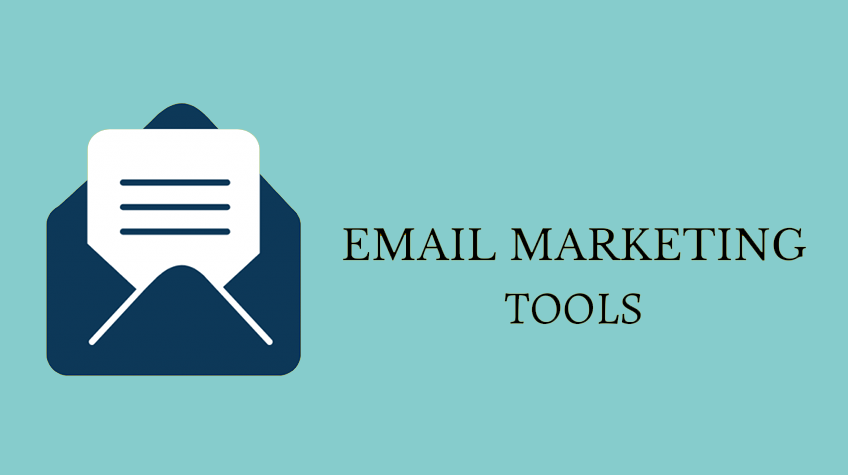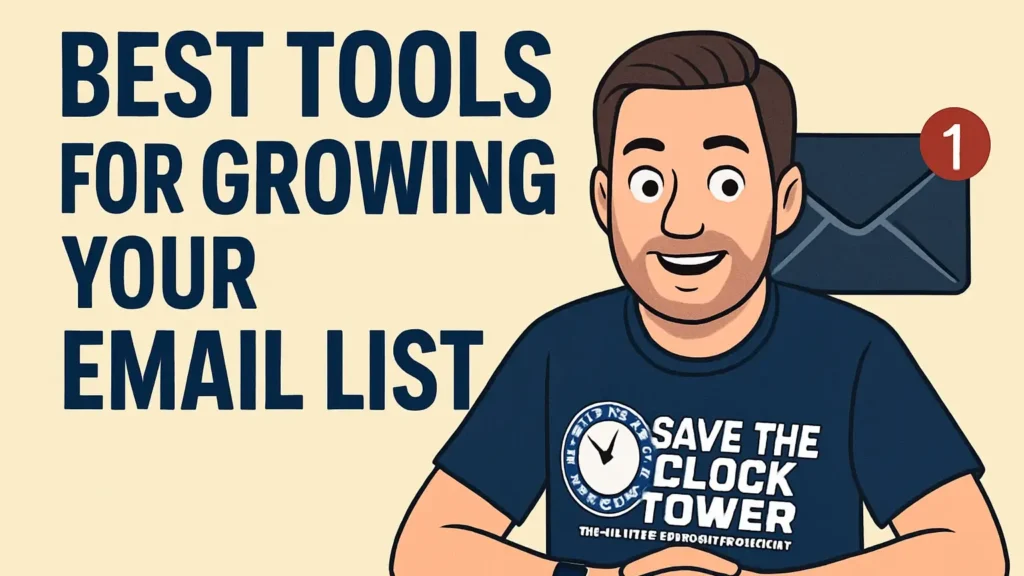Best Email Marketing Tools for Small Lists That Deliver Big Results

Email marketing doesn’t have to be a big-budget game. In fact, if you’re working with a small email list whether it’s 100 or 1,000 people you actually have an advantage. Smaller lists often mean better engagement, more personal communication, and less clutter. But to get the most out of your efforts, you need the best email marketing tools for small lists ones that offer powerful features without overwhelming complexity or cost.
Let’s explore why email marketing is still one of the most effective strategies, what features matter for small lists, and which tools can truly deliver big results even on a small scale.
Why Email Marketing Still Works — Even with a Small List
In the age of social media, it’s easy to assume email marketing is outdated—but that couldn’t be further from the truth. Email remains one of the most reliable and personal ways to connect with your audience. And when your list is small, it can actually work better.
Here’s why email marketing still delivers strong results:
- Direct access to your audience – Unlike social platforms where algorithms decide who sees your content, email lands directly in your subscriber’s inbox.
- Higher engagement – Smaller lists usually mean more targeted, interested subscribers. These people are more likely to open, read, and click your emails.
- More control – You own your email list. It’s not dependent on a third-party platform that might change policies or shut down your reach.
- Stronger relationships – Email gives you the space to speak directly and personally, building trust over time.
- Better ROI – Email marketing consistently ranks among the highest in return on investment, especially when you use automation and personalization effectively.
So even if you have just a few hundred subscribers, you’re not at a disadvantage. You’re actually in a position to create more meaningful, high-converting conversations—something that’s much harder to do on noisy platforms like Instagram or Facebook.
Why Small Lists Can Be More Powerful Than You Think
If you’ve ever felt like your email list is “too small to matter,” think again. Small lists are often highly targeted, meaning your subscribers actually care about what you’re saying. With the right tools, you can build trust, improve open rates, and drive real conversions—without needing tens of thousands of contacts.
Smaller lists allow for more personalized messaging. You’re not blasting promotions to random people; you’re building relationships. That personal touch leads to higher engagement, which is what email marketing is all about.
What to Look for in Email Marketing Tools for Small Lists
When selecting the best email marketing tools for small lists, you don’t need complicated or enterprise-level features. Instead, focus on tools that are simple, affordable, and built to drive engagement.
Look for easy-to-use email builders, basic automation (like welcome emails), and segmentation even if your list is small. These features help you send the right message to the right people, which improves open and click rates.
Strong analytics are also key. Insights into what’s working help you improve your emails over time. And don’t forget pricing many tools offer free or low-cost plans for under 1,000 subscribers, which is perfect when you’re just getting started.
The right tool should save you time, keep things simple, and still deliver big results from your small list.
- Easy-to-use drag-and-drop email builders
- High deliverability rates
- Automated workflows (like welcome sequences or follow-ups)
- Audience segmentation
- Affordable pricing based on smaller contact sizes
- Personalization features
- A/B testing (for subject lines or content variations)
- Simple analytics and reporting
You want tools that save you time, simplify your process, and help you get better results without needing a marketing degree.
Top Tools That Work Great for Small Email Lists

Let’s take a look at a few powerful yet simple platforms perfect for small businesses, solopreneurs, and creators.
1. MailerLite: Clean, Simple, and Budget-Friendly
MailerLite is great for beginners who want a simple and clutter-free email tool. It offers an easy drag-and-drop editor, automation, and solid templates all on a free plan for up to 1,000 subscribers. It’s affordable, reliable, and perfect for small lists.
- Free plan for up to 1,000 subscribers
- Drag-and-drop email builder
- Automation tools
- Great templates
- Advanced features like segmentation and A/B testing
It’s simple without being too basic, and the pricing is very affordable as you grow.
2. ConvertKit: Perfect for Creators and Coaches
ConvertKit is ideal for creators like bloggers, coaches, and course sellers. It offers simple automation, tagging, and landing pages to help you grow your audience and sell products all while keeping things easy to manage for small lists.
- Build automated email funnels
- Tag subscribers based on their behavior
- Create landing pages and forms
- Sell digital products directly from emails
It’s slightly more premium in price, but the value it delivers is strong for smaller, engaged lists.
3. Brevo (formerly Sendinblue): Powerful Automation on a Budget
Brevo (formerly Sendinblue) offers strong automation and even SMS marketing—great for small teams. Its free plan includes advanced features like email workflows and contact management, making it a smart choice for growing businesses on a budget.
- Run automated email campaigns
- Combine email and SMS for better engagement
- Access built-in CRM features
- Send transactional emails (like receipts)
It scales with you, but still supports small list sizes without requiring a big investment.
4. Moosend: Automation Made Easy
Moosend is a simple yet powerful tool with easy automation, great templates, and real-time analytics. It’s perfect for small businesses that want professional email marketing without a steep learning curve.
- Responsive email templates
- Advanced automation workflows
- Real-time analytics
- E-commerce integrations (like WooCommerce or Shopify)
It’s a solid choice for small businesses, especially those selling products online.
5. Mailchimp: Still Reliable for Beginners
Mailchimp remains a popular choice for beginners with its user-friendly setup and basic features. The free plan supports up to 500 contacts good for testing email campaigns before upgrading.
- Up to 500 contacts
- Basic email templates
- Limited automation features
- Basic reports
It’s user-friendly and works well if you’re just testing email marketing for the first time.
How AI is Enhancing Email Marketing for Small Lists

Artificial Intelligence (AI) isn’t just for large corporations anymore. Today, many of the best email marketing tools for small lists are using AI to simplify tasks and improve campaign performance even for beginners.
AI can make a big difference for small businesses by:
- Analyzing subscriber behavior to show what content your audience is most likely to engage with
- Recommending the best time to send emails, helping boost open and click rates
- Suggesting subject lines that are more likely to get noticed in crowded inboxes
- Personalizing email content based on user activity or preferences
- Segmenting your list automatically, so each person receives more relevant messages
- Providing A/B testing insights, so you know what’s actually working
Tools like MailerLite, ConvertKit, and Brevo have already integrated many of these AI-powered features. For small lists, this means smarter marketing with less manual effort allowing you to focus on strategy rather than spending time on repetitive tasks.
With AI on your side, even small businesses and solo founders can run highly targeted and effective email campaigns that deliver big results.
How to Make the Most of Your Small List
No matter which tool you choose, the real impact comes from how you use it. A small email list isn’t a limitation—it’s an opportunity to build deeper connections with your audience. When people actually open, read, and engage with your emails, that’s where the magic happens.
To make the most of your small list:
- Focus on value, not volume – Every email you send should serve a purpose. Whether it’s a helpful tip, a product update, or a personal story, make it worth opening.
- Personalize wherever possible – Use first names, refer to past behavior, or segment your list based on interests. Personalized emails feel more human and get better results.
- Keep your message simple and clear – Avoid trying to say too much in one email. One strong call-to-action (CTA) is often more effective than multiple scattered links.
- Test and learn – Track open rates, clicks, and conversions. Try different subject lines, sending times, or formats to see what works best for your audience.
- Stay consistent – Whether you email weekly or twice a month, stick to a schedule. Consistency builds trust and keeps your brand top of mind.
Even with just 200 or 500 subscribers, if they’re engaged and interested, you can see real results more sales, more loyalty, and stronger relationships over time.
Final Thoughts
Choosing the best email marketing tools for small lists isn’t just about picking the trendiest or cheapest option. It’s about finding a tool that matches your workflow, connects with your audience, and aligns with your business goals. The right tool should feel intuitive, help you stay consistent, and grow with your business delivering real results without unnecessary complexity.
At its core, email marketing is about building relationships. Whether you’re sending a weekly newsletter, launching a new product, or simply staying in touch, the right platform can make your efforts smoother and more impactful. Even a list of just a few hundred engaged subscribers can generate powerful outcomes more trust, more conversions, and more loyalty.
So never underestimate the value of a small list. With the right strategy and tools, it can become one of your most powerful marketing assets.

